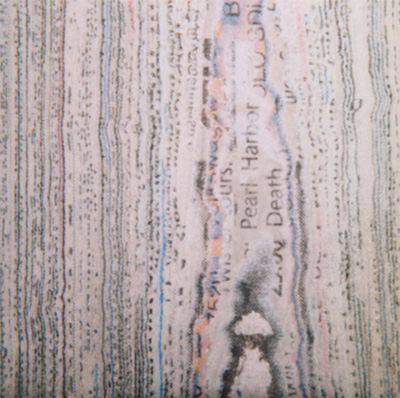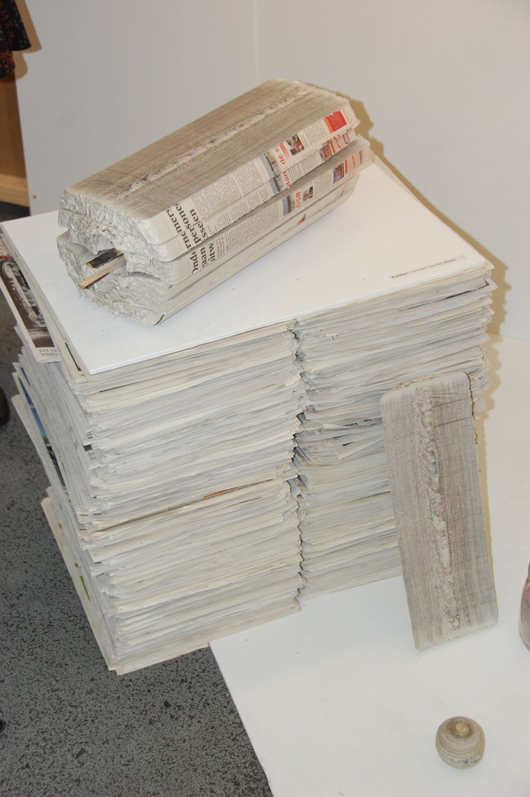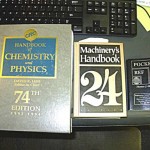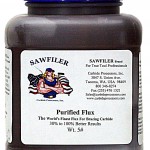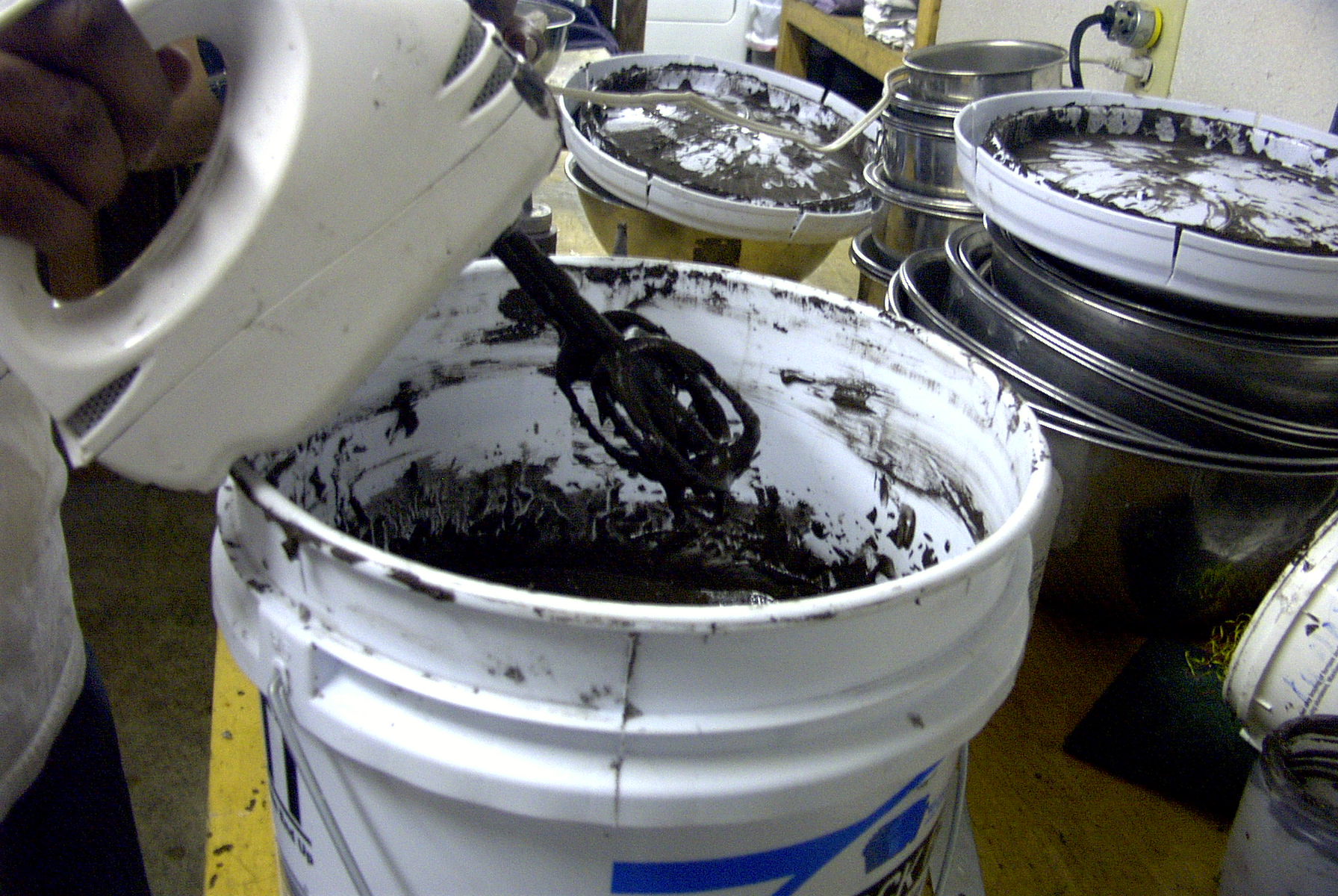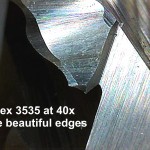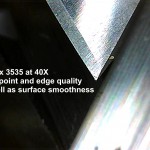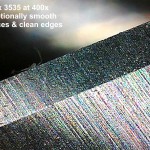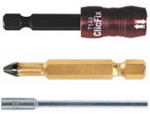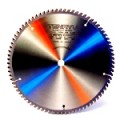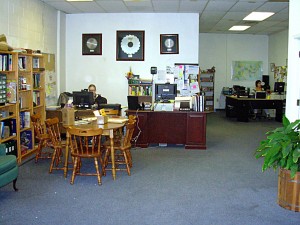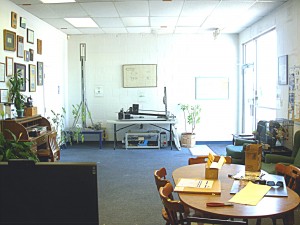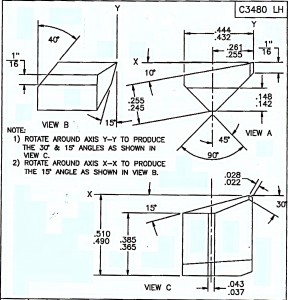Welcome to the Carbide Processors Blog
Stellite Information
Posted on Wednesday, October 26th, 2011 at 3:31 pm.
Napoleon Hill wrote a book called Think and Grow Rich many decades ago where he stressed the importance of surrounding yourself with the right people.
One of my right people has been Louw De Jong of Stoody Deloro Stellite©. These are the actual Stellite©.
Stellite© is a pretty cool material. The only real problem I have with it is that I sell tungsten carbide for tipping saws. Stellite© also sells material for tipping saws so it is a competitor.
This makes Louw DeJong of the Stoody DeLoro Stellite© a competitor of mine. Unfortunately Louw is the worst kind of competitor. He is intelligent, hard-working, absolutely honest and a genuinely nice guy. How are you getting to compete with that?
Many, many years ago Louw and I were at a meeting of the Wood Machining Institute. I had spoken in one of Louw’s technical guys had spoken. It was time for lunch and I gathered up about six or eight guys who were customers or potential customers and was going to buy them lunch. Louw was standing there sort of by himself so I invited him as well.
Next thing I know Louw made some sort of a deal with the busboy or the waiter and Louw had the check. That’s a kind of guy Louw is.
Anyway if you should have any question at all about Stellite© I suggest you contact Louw. He is been there for decades, knows a great deal and is more than happy to find someone who knows the answer if he doesn’t.
Louw De Jong
Stoody Deloro Stellite©
604 463-2140
Newspapers Get Back To Their Roots
Posted on Thursday, October 20th, 2011 at 4:34 pm.
Get it? I thought it was funny.
Anyway, I was very excited to read about this the other day over at Inhabitat.
Taking recycling to the next level, Mieke Meijer and the design company Vij5 have created a wood-like product made from recycled newspapers. Think of how many newspapers get thrown out every day. That’s why projects like these are so exciting. So much good can be done for our planet, not to mention adding new products to the manufacturing industy.
The thought process behind this creation was pretty much what you’d expect. Mieke Meijer, this project’s proud papa, thought that if you could turn trees into newspapers why couldn’t you make newspaper into trees. The answer was, because no one had done it yet.
The paper is coated with a special glue that can be removed later so the material can be re-recylcled. It’s then rolled into logs and cut into boards.
The wood can be cut, milled, and sanded just like any other wood. The burl is created by the layers of paper. When sanded and left unfinished the newspaper wood has a soft texture, which has been compared to velour. It can be painted, of course, but why hide that beautiful pattern?
So far they’ve only been able to produce small logs, because of the size of the paper, but they’re working on that too.
It’s still a costly product to make, but the team who developed it is working on ways to produce it faster and cheaper. If you’d like to check availability, price, and get some for yourself you can contact Designlabel Vij5 at info@Vij5.nl. Also you can check out their website.
Three Great Technical Books
Posted on Wednesday, October 19th, 2011 at 3:55 pm.
Over the years I have come to really appreciate three books.
Pocket Ref by Thomas J Glover from the Engineering Publications Group
Machinery’s Handbook
Handbook Of Chemistry And Physics (actually the CRC Handbook Of Chemistry And Physics)
The Pocket Ref stays next my desk. If an employee wants to use it they have to use it in my office and put it back or I’ll buy them their own copy. I have trained myself to look up the conversion factors in the pocket ref every time I need to do a conversion. Even if I think I know what the conversion factor is I still look it up.
Twenty 20 years ago or so I was doing a quote and I was off by one decimal point. I was one decimal point too low, got the contract and had to live with it.
Machinery’s Handbook is very, very good for feeds and speeds. I also use it for materials, conversion factors that even has financial information.
I use the Handbook of Chemistry and Physics mostly for chemical research although it comes in surprisingly handy in other areas. Today the question came up as to whether “pencil lead” responded to a magnet. The book says graphite has a slight negative magnetic susceptibility so the pencil lead in question must have something magnetic unit if it responds to a magnet.
Pocket Ref is pretty inexpensive and you might as well buy yourself a new one. The other two can be pretty pricey but there are a great number of used ones out there. You get a chance you should at least take a look at these two. I bought both of mine new but could just as well have done with used versions. Even buying them brand-new they have been two of the best investments I’ve ever made.
We Sell Great Tools
800 346-8274
Dried Out Flux
Posted on Wednesday, October 19th, 2011 at 3:54 pm.
Question
I have some of your dark brown flux, it has dried out. How to thin?
Answer
Officially you use deionized water. We use tap water. The minerals and additives in tap water can interfere with the action of the flux. However this is sort of like losing weight by getting your hair cut. It works but it is not usually very important.
Try a cheap kitchen mixer from Target or a garage sale blender.
The water is a carrier for the flux particles. It makes it easier to get an even, consistent coating of flux.
You want the flux particles as small as reasonably possible. If it is easier for you, then grind them dry and mix with water.
You can also use the flux dry as it is. jsut sprinkle it on the work area.
Flux and Braze Alloy at Great Prices
800 346-8274
Why Vortex Router Bits are Expensive
Posted on Tuesday, October 18th, 2011 at 8:31 pm.
Vortex router bits cost a little bit more to buy but they cost a whole lot less to run.
Vortex router bits are solid carbide. What’s more they are an advanced grade of solid carbide to give maximum life with maximum toughness. The carbide blanks have been Hot Isostatic Pressed (HIPed) which is a manufacturing process designed to produce perfectly homogenous carbide parts with no voids, binder pools or similar imperfections.
Vortex router bits are ground on the finest precision CNC machines. The base price of these machines is somewhere around a half-million dollars and vortex buys the very best.
Vortex uses the very finest diamond wheels and grinds for clean edges and smooth surfaces. Grinding for clean edges and smooth surfaces means multiple passes with different grits. This greatly adds to the manufacturing time and cost but it produces tools that are sharp and that stay sharp.
You can make cheaper router bits if you grind faster and make fewer passes. However this leaves you with rougher surfaces which wear faster. It leaves you with microscopic next on the cutting edges which serve as force concentrators and greatly shorten the life of the carbide router bit.
If you look at Vortex router bits under a microscope, even a 400 X power microscope, you will see that the edges are clean and smooth. You also see that the shiny gray router bit reflects a whole rainbow of colors. This is because the grinding grooves are so incredibly fine that they actually break up white light into a rainbow effect.
Vortex router bits cost what they do because they are made to be the finest router bits in the world.
consistently. Vortex router bits run with the least downtime, the least labor cost and the least ruined material.
Buy Vortex Router Bits
How to Make Hand Tools
Posted on Tuesday, October 18th, 2011 at 6:38 pm.
Casting, Forging, Machining, and Sintering
In casting you get the metal hot and you pour it into a mold. With forging you take a piece of metal and get it hot and then you hammer it into shape. Machining is a whittling process by which you take a block of material and cut it down into the desired shape. Sintering is powdered metal. It takes various powders together and presses them in a mold. Then it heats up the molded powders to a temperature just below the melting point. This bonds the grains together and gives you a finished shape. Sintering is it only way to make certain parts such as tungsten carbide shapes.
You can hear a lot of arguments about which gives you the best results. The truth is that each technique is most suitable depending on a wide range of requirements and circumstances.
Traditionally forging was considered to give a better part than casting. Modern casting techniques have raised the quality of cast parts to where it can be somewhere around 95% of the strength and overall quality of a forged part at considerably less cost.
In all these techniques one of the major faults is the creation of voids or holes or soft spots inside the material.
Forging eliminates soft spots through the use of sheer physical force in the form of hammering. Casting eliminates soft spots and voids through modern mixing techniques and intense vibration during the pouring and settling. Machining is often done on forged billets to eliminate the possibility of voids or holes. Sintered parts are often subject to HIPing. Hot Isostatic Pressing subjects the hot, soft parts to intense pressure which squeezes them and thus eliminates voids and porosities.
Buy Great Hand tools at Great Prices
800 346-8274
How to Rip Aluminum Extrusions on a Table Saw
Posted on Monday, October 17th, 2011 at 6:01 pm.
Note: You can cut aluminum on a table saw but you need to be very careful.
Question from a customer
I need your expertize. I do remodels and restorations in the LA area. One area of work is the installation of “insert” replacement windows- e.g. Marvin Replacement casements. The window is made to be inserted into the existing window opening, preserving all interior and exterior molding/trim. Gaps between the outside perimeter of the window and the existing opening are closed with aluminum frame extenders, that are cut to size and snap into the edge of the new window. My question-
Can I use a blade such as the PRA-255100DN on a table saw to rip the extrusion to the desired width? The material is supplied by Marvin in a fixed width (approx 2.5 in) and has to be ripped to 1.0 – 1.5 in, depending on the window. The material is thin, flat aluminum extrusion 1/16 x 2.5 in. I need to rip lenghts ranging from 18 in to 60 in. Of course, I will use a jig/sled to stabilize and clamp the material in place as it is cut? I would appreciate your advice.
Thanks,
Answer
Dear Sir:
Ripping aluminum extrusion on a table saw is not recommended for safety reasons. The problem is that the blade will grab the material and throw it at the operator.
Our recommendation for ripping aluminum on a table saw would be PR-25580D from Tenryu.
We recommend this because it has a 10 degree positive hook. Aluminum is usually cut with a negative hook but the positive hook will be much safer on a table saw. The positive hook will help hold the aluminum down.
It is very important that pressure be constantly applied to hold the material down. It is also very important that a riving knife be used.
You certainly can cut aluminum extrusion safely on a table saw with proper care. The concern is that aluminum can be grabby which can result in kickback.
Sincerely,
Tom Walz
We sell Tenryu Saw Blades
800 346-8274
Carbide Processors Building Inside
Posted on Monday, October 17th, 2011 at 3:51 pm.
If I am going to show you the outside I might as well show you the inside as well.
I am not too concered about how we look from the outside. However I do want a clean, pleasant , efficient working environment.
This is what you see as soon as you come through our front door. On the left are bookshelves with maybe 100 reference books or so. With the rise of the Internet that went through my library and donated a couple hundred books. The shelves are also full of samples of various projects over the years.
You can see Leslie there on the left him, hard at work. That is Renée’s desk in the middle. Renée’s on the back right at Emily’s desk because Emily is busy having a baby.
On the wall are some framed saw blades from customers. The big one is a guided edger saw from a sawmill. The smaller blades are ultraprecise blades that our customers / suppliers built for us.
The table and chairs are what serve us as a conference area. I drank get as many people as possible into a conference. I really believe in a philosophy where everybody gets to think. This is also close to the working desks because we are quite often interrupted by customers.
So if we are in a meeting and you are trying to sell us something you have to convince everybody and there are going to be people leaving during the meeting and coming back because nothing is more important than taking care of the customer.
This is our office from the other direction. You can see our front door on the right.
The most important thing here is the parakeets who are on the far right just in front of the door. The odd pieces of machinery in the back middle and back left are a couple pieces that I had cut custom-built to run experiments. The experiments were very successful and we solved the problems but the machines are kind of cool so I left them in the front office.
On the left are some of the awards to us and newspaper articles about us. Many years ago I had a consultant tell me that I ought to get this kind of thing and put it up. So I did. I am proud of what I did and still very proud of what I am doing but I really do not feel the need for awards or recognition anymore.
What thrills me and thrills all of us is being able to help a customer solve a problem. Emily, my office manager and daughter, says that most people who call us do so because they want a better tool.
Well, that is where we work. I guess it makes us look like a real business if you leave out the parakeets. Lucky, the dog, wasn’t in the pictures because he was trying to help me.
We Sell Tools and Tool Building Supplies
800 346-8274
How to Buy Custom Carbide Parts
Posted on Thursday, October 13th, 2011 at 11:07 pm.
This is always a little tricky. I have been doing it 30 years and I still consider it a somewhat tricky, uncertain process.
It starts with the way carbide is made. The carbon powder, tungsten powder, cobalt powder and whatever else are mixed together with wax. This wax is then pressed into shape. The pressed form is heated to melt the wax out. This leaves carbide in what is called the ‘green state’. It has a consistency softer than sidewalk chalk. This means it can be easily carved, drilled or otherwise worked to provide custom parts.
The problem comes in with the next step which is the sintering. When the parts are sintered they shrink approximately 40%. This is a fairly variable number. Calculating exactly how much the parts are going to shrink is a matter of both art and science. Unfortunately you cannot precisely calculate the amount the parts are going to shrink so tungsten carbide parts are routinely made a tad oversize. In this case figure a tad is somewhere between 0.001” and 0.003”.
As the parts were pressed into shape originally stresses were put into the part. These stresses will be relieved during heating. Additional stresses are formed during heating.
These stresses will alter the shape of the park. The project I was working on today was a long, narrow and thin part. Long, narrow and thin parts tend to move during the sintering. They may bow, twist, warp or otherwise deform.
These parts are for a customer that has been using standard bars to make tools. He now has to gear up to handle the success and he thinks that a special carbide shape could greatly speed up his production process. He is a very intelligent person and has a very good idea of what he can and cannot tolerate in the form of tolerances on the new carbide part.
The problem is that we cannot promise a part without leaving the tolerances of at least a couple thousandths of an inch.
So far I have three quotes for the customer on this part.
$ 4.40 ea.
$ 2.87 ea. with an $ 800 tooling charge
$ 8.00 ea
The tooling charge on the second quote is to make the special dies for this part. The first and third quotes do not have the tooling charge.
I have gone ahead and bought parts at the eight dollar price as I consider this far and away the best way to go.
There is more to the story, of course. The eight dollar charge is based on the quantity of 12 parts. The other charges are based on a quantity of 2000 parts. I also paid for the parts myself. It is a small amount and it was my decison to order them.
Going the way I did it we will spend a little over $100 with shipping but we will get 12 actual parts. The customer can then see how actual parts will work in his assembly process. He can then take pictures to explain what is going on. He can use a magic marker or fingernail polish to label areas on the parts that are essential and need work.
This will delay the delivery of actual production parts by about a month. It will also add a little cost to the project. However it will greatly increase the chance of getting production ready parts at the lowest cost.
Carbide Manufacturers
Posted on Wednesday, October 12th, 2011 at 3:47 pm.
Question from an Engineer
We have devices with ~ 1 inch blocks flying through pulverized coal laden air at ~ 4000 fpm. The brazed tungsten carbide cloth cladding that lasts years in other areas wears away quickly in this application.
I’m looking for sources for crudely finished tungsten carbide blanks. Plates, blocks, bars or rods.
Any suggestions?
Thanks
Dan T
Answer
We supply carbide at Carbide Processors
There are thousands of grades and hundreds of manufacturers of carbide. The right grade in them right manufacturer can make a huge difference in price and performance. If you do it right you really can’t get a much better product for much less money.
What you want is “as sintered” parts. These are just the way they came out of the sintering furnace. No post sintering grinding.
If you’re going to braze these parts in place you may need some post-sintering braze treatment.
You also need to select the right grade. As an example, our Cermet 2 grade gives extremely long life cutting man-made materials such as MDF, Corian, etc. It is not a particularly good grade for sawmills because there is too much impact in sawmills. On the other hand our Super C grade gives 5 to 10 times the life of ordinarycarbide in sawmills but it doesn’t have the wear life that Cermet 2 does in man-made materials.
The grade you need depends on what kind of wear you are experiencing. Currently I look at wear from about 17 different ways when I do a failure analysis.
Sometimes carbide wear is caused by micro-chipping which means you need a tougher grade. Sometimes it is caused by straight abrasion which means you need a harder grade. Sometimes it is a chemical or electrochemical process in which case an alloy binder can make a huge improvement.
We deal with a couple dozen carbide suppliers around the world and each has its own personality. Some are much more expensive than others, some have much faster delivery, many have their own special grades and many have their own specialties.
If you want some help with this project, feel free to contact me.
Tom Walz
president@CarbideProcessors.com
800 346-8274



